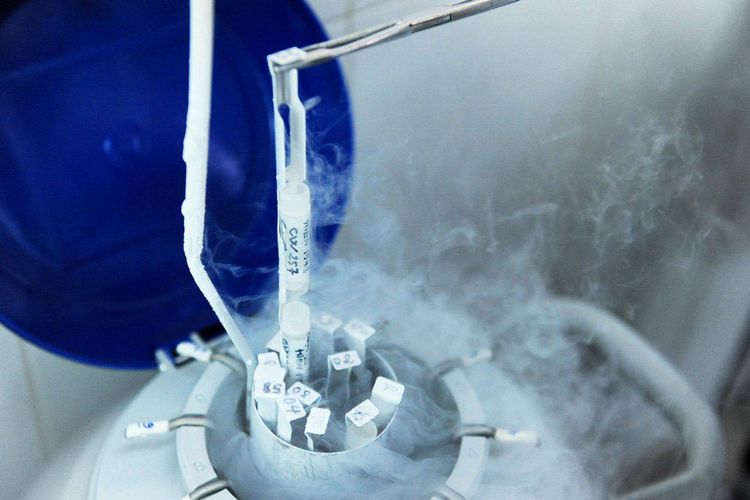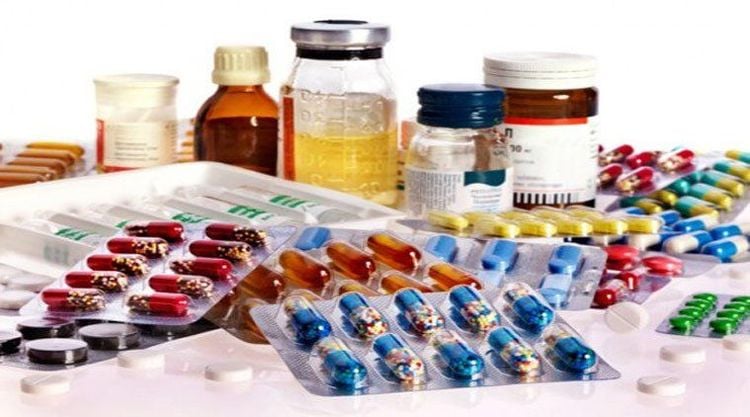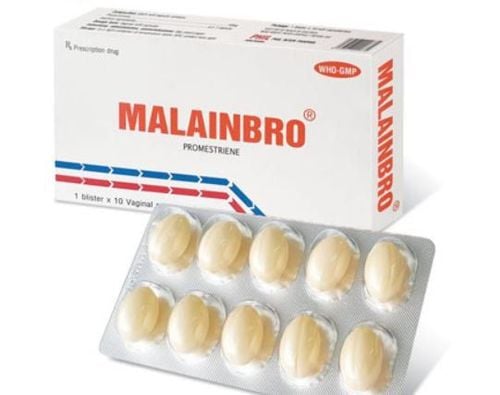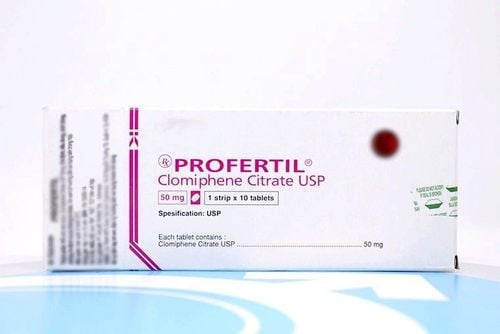This is an automatically translated article.
Feminizing hormone therapy is used to induce physical changes in the body that are normally caused by female hormones during puberty (secondary sex characteristics). In people with male sexual characteristics, when transgender, this feminizing hormone therapy can be used to induce feminization-oriented changes. This therapy also brings many benefits but also has many disadvantages for users.1. What is feminizing hormone therapy?
Feminizing hormone therapy is used to induce physical changes in the body that are normally caused by female hormones during puberty (secondary sex characteristics) and to promote concordance between gender identity and body sex (homosexuality).If feminizing hormone therapy is started before the male pubertal changes begin, secondary male sex characteristics such as body hirsutism and changes in pitch can be avoided. voice. Feminizing hormone therapy is also known as cross-sex hormone therapy.
During feminizing hormone treatment, you will be given medication to block the action of the hormone testosterone. You will also be given the hormone estrogen to reduce testosterone production and create female sex characteristics. The changes caused by these drugs may be temporary or permanent. Feminizing hormone therapy can be performed alone or in combination with feminization surgery.
However, feminizing hormone therapy is not for all transgender women. Feminizing hormone therapy can affect your fertility and sexual function and cause other health problems. Your doctor can help you weigh these risks and benefits.
2. Why is feminizing hormone therapy done?
Feminine hormone therapy is used to change your hormone levels to match your gender identity. Often, people seeking feminizing hormone therapy will experience distress due to a discrepancy between the sex experienced or expressed and the sex assigned at birth (gender dysphoria). To avoid excess risk, the goal is to maintain hormone levels within normal limits for the target sex. Feminine hormone therapy can:Make gender dysphoria less severe Reduce psychological distress and emotions Improve psychological and social functioning Improve sexual satisfaction Improve quality of life Although hormone use is not currently approved by the Food and Drug Administration for the treatment of depression late in life, but research shows that it may be safe and effective. If used in adolescents, hormone therapy is usually started at age 16. Ideally, treatment begins before the development of secondary sex characteristics so that adolescents can experience puberty as gender. their defined nature. Hormone therapy is not usually used in children.

Liệu pháp hormone nữ tính hoá được thực hiện ở độ tuổi 16
Have had or have had hormone-sensitive cancers, such as prostate cancer Have thromboembolic disease, such as when a lump a blood clot forming in one or more of the deep veins of the body (deep vein thrombosis) or a blockage in one of the pulmonary arteries in the lungs (pulmonary embolism) Having significant uncontrolled mental health problems Okay
3. Risks of feminizing hormone therapy
Talk to your doctor about changes in your body and any concerns you may have. Complications of feminizing hormone therapy may include:
Blood clots in the deep veins (deep vein thrombosis) or in the lungs (pulmonary embolism) High triglycerides Gallstones Weight gain Increased liver function tests Decreased libido Erectile dysfunction Dryness High potassium (hyperkalemia) High blood pressure (hyperkalemia) Type 2 diabetes Cardiovascular disease, in the presence of at least two other cardiovascular risk factors Too much prolactin in your blood (hyperprolactinemia) or a condition in which a noncancerous tumor (adenoma) of the pituitary gland in the brain overproduces the hormone prolactin (prolactinoma) Current evidence indicates that there is no increased risk breast cancer increase
4. Fertility in transgender people undergoing feminizing hormone therapy
Because feminizing hormone therapy may decrease your fertility, you will need to make a decision about future children before starting treatment. The risk of permanent infertility is increased with long-term hormone use, particularly when hormone therapy is started before puberty. Even after stopping hormone therapy, testicular function may not recover enough to warrant conception.
If you want to have children, talk to your doctor about freezing your sperm (sperm cryopreservation) before starting feminizing hormone therapy.
Other side effects of estrogen use in transgender women include decreased sex drive, erectile function, and ejaculation. Erectile function may improve with oral medications such as sildenafil (Viagra) or tadalafil (Adcirca, Cialis).

Phương pháp đông lạnh tinh trùng giúp bảo quản tinh trùng khi bạn muốn sinh con
5. Preparation steps before performing feminizing hormone therapy
Before starting feminizing hormone therapy, your doctor will evaluate your health to rule out or address any medical conditions that may affect or contraindicate treatment. Evaluation may include:Evaluation of your personal and family medical history Physical examination, including evaluation of your external reproductive organs Laboratory tests measuring lipids, blood glucose , your blood count, liver enzymes, electrolytes and prolactin hormone Assessment of your immunizations Age and gender appropriate screening Identify and manage tobacco use, drug abuse , alcohol abuse, HIV and other sexually transmitted infections Discuss sperm freezing (sperm cryopreservation) Discuss the use of potentially harmful treatments, such as hormones are not indicated, industrial silicone injection or orchiectomy. You may also need a provider with transgender health expertise for a mental health assessment. The assessment can assess:
Your gender identity and depression The impact of your gender identity at work, school, home and social settings, including issues related to discrimination discrimination, relationship abuse and minority stress Mood or other mental health concerns Sexual health concerns Risk-taking behaviors, including substance use and use of non-medical grade silicone injections or unapproved hormone therapy or supplements Protective factors such as social support from family, friends, and colleagues Goals, risks, and expectations about your treatment and care plan for the future Adolescents under the age of 18, traveling with their parents or guardians, should also see a doctor and mental health provider who can transgender child health expertise to discuss the risks of hormone therapy, as well as the possible effects and complications of the transition. to count.
6. Steps to perform feminizing hormone therapy
6.1. During your routine, you'll start feminizing hormone therapy by taking the diuretic spironolactone (Aldactone) at a dose of 100 to 200 milligrams per day. This blocks male sex hormone (androgen) receptors and can block testosterone production. After six to eight weeks, you'll start taking estrogen to reduce testosterone production and induce femininity. Estrogen can be taken in a variety of ways, including as an oral pill, injection, or in topical preparations, such as a cream, gel, spray, or patch.

Estrogen có thể được sử dụng theo nhiều phương pháp dưới nhiều dạng khác nhau
However, do not take estrogen by mouth if you have a personal or family history of venous thrombosis. Using gonadotropin-releasing hormone (GnRH) analogues to block testosterone production may allow you to take a lower dose of estrogen and not need to use spironolactone. However, GnRH analogues are more expensive.
Complementary therapies may include:
Progesterone reduced to small particles (microzed), which can improve breast growth Finasteride (Propecia) or topical minoxidil (Rogaine) or both for those who are prone male pattern baldness 6.2. After the course of Feminine Hormone Therapy will begin to make changes in your body within a few weeks to a few months. This period of yours may have the following changes:
Decreased libido . This will begin one to three months after starting treatment. The maximum effect will occur within one to two years. Decreased spontaneous erection. This will begin one to three months after treatment. The maximum effect will occur within three to six months. Slows down hair loss in the scalp. This will begin one to three months after treatment. The maximum effect will occur within one to two years. Softer, less greasy skin. This will begin three to six months after treatment. Testicular atrophy. This will begin three to six months after treatment. The maximum effect will occur within two to three years. Breast development. This will begin three to six months after treatment. The maximum effect will occur within two to three years. Redistribution of body fat. This will begin three to six months after treatment. The maximum effect will occur within two to five years. Reduced muscle mass. This will begin three to six months after treatment. The maximum effect will occur within one to two years. Reduces hair growth on face and body. This will begin six to 12 months after treatment. The maximum effect will occur within three years.
7. The results of feminizing hormone therapy
During your first year of feminizing hormone therapy, you'll need to see your doctor about every three months for a check-up, as well as any time you change your hormone regimen. Your doctor will:Record your physical changes Monitor your hormone levels and use the lowest dose needed to achieve the desired physical effect Monitor changes in lipids, blood sugar fasting, blood count, liver enzymes, and electrolytes may be caused by hormone therapy Monitor your mental health

Người sử dụng phương pháp điều trị bằng liệu pháp hormone nữ hóa cần tái khám theo lịch hẹn của bác sĩ
After feminizing hormone treatment, you will also need routine preventive care, including:
Breast cancer screening. This includes monthly breast self-exams and age-appropriate mammograms after 5 to 10 years of estrogen therapy. Additions. This includes standard calcium and vitamin D supplements, along with age-appropriate recommended bone density assessments for women. Prostate cancer screening. This should be done according to age-appropriate recommendations. With estrogen treatment, your PSA is expected to decrease by about 50 percent. Vinmec International General Hospital is one of the hospitals that not only ensures professional quality with a team of leading medical professionals, a system of modern equipment and technology. The hospital provides comprehensive and professional medical examination, consultation and treatment services, with a civilized, polite, safe and sterile medical examination and treatment space.
Please dial HOTLINE for more information or register for an appointment HERE. Download MyVinmec app to make appointments faster and to manage your bookings easily.
Article referenced source: mayoclinic.org












